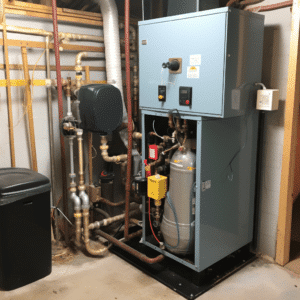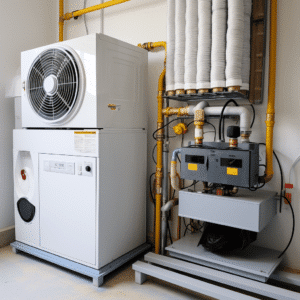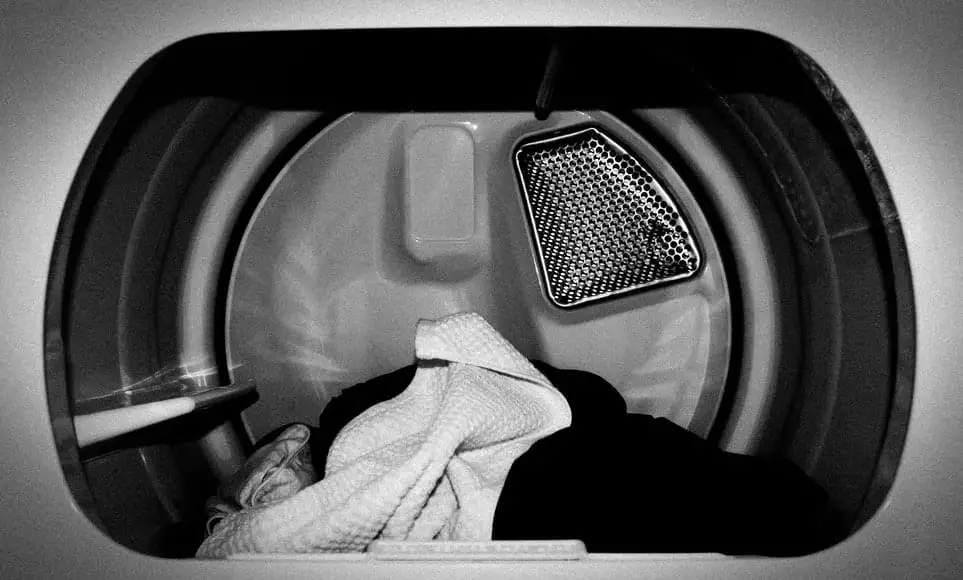Can A Gas Dryer Be Converted To Electric? Well, this is one of the most common questions in the appliance community.
It may sound like an odd request but while some people generally relocate into homes that only offer electricity, others simply prefer an electric dryer.
The simple answer to this question is yes. However, most experts do not recommend going this way for various reasons. But before we get into specific details, it’s important to understand the significant differences between a gas dryer and an electric model.
Table of Contents
The Major Differences Between a Gas and Electric Dryer

Propane and other natural gas dryers use a gas burner to create heat, and other than this, they operate just about the same way as electrical dryers. Gas dryers, however, can dry your clothes more quickly than electrical dryers because they usually run much hotter.
It is also cheaper to operate a gas dryer than an electrical one, considering that gas dryers are more energy-efficient compared to electrical dryers. We’ll discuss this in more detail below.
One significant difference is the energy source that each type of dryer requires. The average running costs of a gas dryer will be around 50% less than those of an electrical unit. Both models have different installation requirements.
The last major difference between electric and gas dryers is the cost of purchasing each type. Gas dryers usually cost more than electrical ones.
Gas Dryer vs. Electric Dryer: Key Features
There are two types of gas dryers: propane and natural gas. Gas dryers must be vented outdoors to prevent breathing poisonous particles that can harm health.
Dryers are vented outside for different reasons than gas dryers. Electric dryers need external venting to expel hot air and water vapor.
Electric dryers utilize 240-volt electricity, double the house current needed to power the heating coils, whereas gas machines use 110-volt current.
If you want a 110-volt current, there are some compact electric dryers available that operate on this current. Also, there are specific electric models that don’t require vents, they’re likely to be more expensive.
Installation Techniques for both Electric and Gas Dryers
Perhaps the reason why you’re trying to convert your gas dryer to electric is that your home doesn’t have a connection to a gas line. Having a line installed can be expensive considering that the local gas company will have to install the necessary lines to underground natural gas pipes.
To avoid the extra cost, you may want to check whether you can power the dryer using liquid propane gas as an alternative.
Fortunately, there are kits available to convert a natural gas dryer to a propane dryer. It is highly recommended that you get a reputable technician to help install the gas dryer.
Electrical model dryers, meanwhile, are far simpler to install. All you need to do is plug the appliance into a 240-volt outlet and you’ll be good to go.
In the event that there’s a laundry room in your home, then, probably, you already have a power outlet specially designed to handle the additional energy requirements of the dryer. This should be linked to breakers in the main box.
Electrical dryers usually come with large plugs that consist of either three or four prongs to fit the outlet. The only shortcoming is that sometimes the plug might not match the outlet. In that case, you will have to change one of the components.
Gas Dryer vs. Electric Dryer
Gas or electric dryers employ the same air, heat, and tumble movement to dry laundry. Electrical dryers employ a heating element to evaporate water, unlike gas dryers, which use a gas burner.
Electric dryers heat metal by building electrons in the heating coil. This heats the air, which a fan or blower blows into the drum. However, during the operation of a gas dryer, both propane and gas models use an igniter to burn the gas. The blower/fan then pushes the heated air into the drum, just like it would in an electric version.
The Difference in Venting System between Gas and Electric Dryers
As stated before, both gas and electric dryers need to be vented to the exterior to expel hot toxic particles, hot moist and other debris. Without proper ventilation for your dryer, you would have a laundry room filled with mildew and dust which could cause respiration and other health concerns.
Moreover, a gas dryer vent serves to exhausts out the waste products from the burnt gas, which could be toxic over time. Electrical dryer models can be a better option for those who live in an apartment because there are ventless versions available.
So, Can You Convert a Gas Dryer to Electric?

Well, the short answer is yes, but experts advise against this for a number of reasons. First, it is not cost-effective to convert a gas dryer to an electric and is cheaper to purchase a new electric dryer.
Gas dryers operate differently from electric dryers and as a result, each type features different components. For example, gas dryers use an igniter, a gas burner, and other components that electrical models don’t have.
You would, therefore, need to remove the heating element, gas ignition, and burner to convert the dryer from gas to electric. Not forgetting that the burner tubes, fuses, safety features, and operating temperatures are all different.
In other words, you’ll need considerable knowledge of currents, wiring, and appliance operation to take on this project as there are currently no conversion kits on the market to make this an easy switch.
Gas Dryer to Electric
Also, both dryer types operate in different electrical currents. Gas dryers use a 110-volt current, whereas electric dryers run on 240-volts. You’d, therefore, have to modify your gas dryer to a more powerful current, which can be risky if you’re not sure about what you’re doing.
Another reason why experts don’t recommend converting a gas dryer to an electric one is that the process is not cost-effective.
Electric dryers are less expensive to buy than gas dryers. The best bet may be to sell your gas dryer and purchase a new electric unit. This will save you a great deal of time and money.
Nonetheless, if you still want to make the conversion, here’s how to do it; Start by running a 240-volt, single-phase circuit, then you will need to cap the gas line. After that, replace relays, wirings, controllers, heating assembly, and other components as needed.


